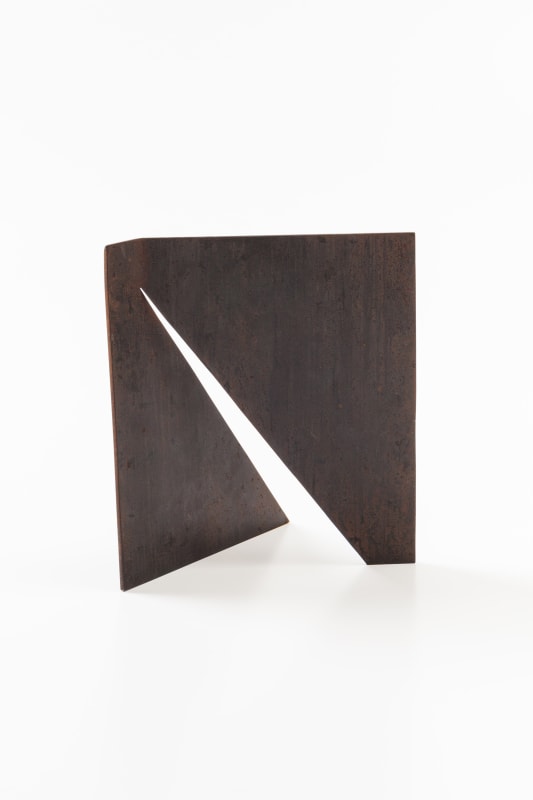Amilcar Augusto Pereira de Castro (Paraisópolis, MG, 1920 - Belo Horizonte, MG, 2002). Sculptor, engraver, designer, diagrammer, set designer, professor. Moved with his family to Belo Horizonte in 1935, and studied at the Law School of the Universidade Federal de Minas Gerais (UFMG) from 1941 to 1945. From 1944, he attended free courses in drawing and painting with Guignard (1896 - 1962) at the Escola de Belas Artes in Belo Horizonte, and studied figurative sculpture with Franz Weissmann (1911 - 2005). In the late 1940s, he took some public positions, which he soon abandoned, as well as his career as a lawyer. At the same time, his works began to move from drawing to three-dimensionality. In 1952, he moved to Rio de Janeiro and worked as a layout designer for several periodicals. After coming into contact with the work of the Swiss Max Bill (1908 - 1994), he made his first constructive sculpture, which was exhibited at the 2nd Bienal Internacional de São Paulo in 1953. He took part in exhibitions of the concretist group in Rio de Janeiro and São Paulo in 1956, and signed the Neoconcrete Manifesto in 1959. The following year, he took part in Zurich in the International Exhibition of Concrete Art organized by Max Bill. In 1968, he went to the United States, combining a scholarship from the Guggenheim Memorial Foundation with the prize for a trip abroad awarded at the 1967 Salão Nacional de Arte Moderna (SNAM). Upon his return to Brazil in 1971, he settled in Belo Horizonte. He became professor of composition and sculpture at the Escola Guignard, where he worked until 1977, including as director. He taught at the School of Fine Arts at UFMG between the 1970s and 1980s. In 1990, he retired from teaching and began to dedicate himself exclusively to artistic activity.
AMILCAR de Castro. In: ENCICLOPÉDIA Itaú Cultural de Arte e Cultura Brasileiras. São Paulo: Itaú Cultural, 2021. Available at: <http://enciclopedia.itaucultural.org.br/pessoa2448/amilcar-de-castro>. Accessed on: 25 Jun. 2021. Encyclopedia entry. ISBN: 978-85-7979-060-7

